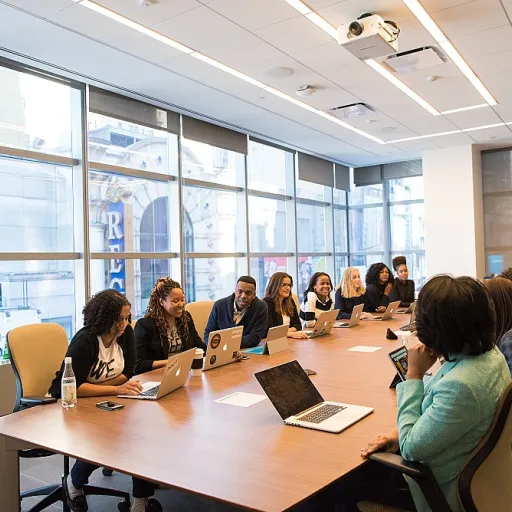
Understanding the benefits of outdoor team building
Why outdoor team building matters in New Zealand workplaces
Outdoor team building activities are more than just a fun day out of the office. In New Zealand, where the natural environment is a big part of daily life, taking your team outside for group activities can create real benefits for collaboration and morale. When people step away from their desks and into an outdoor venue, they get a chance to connect in new ways, break down barriers, and build trust. These experiences can help team members develop stronger relationships, which often leads to better communication and problem solving back at work.
How outdoor activities create stronger teams
Outdoor team building activities like scavenger hunts, building games, or friendly competition exercises encourage participants to work together towards a common goal. Whether it’s a quick game that takes just a few minutes or a full day challenge, these activities push groups of people to use their strengths, support each other, and develop creative solutions. For example, a group might face a building activity that requires everyone’s input, or a problem solving game where each team member’s perspective is valuable. These shared experiences help create a sense of unity and achievement.
- Outdoor games and challenges can be tailored to suit different group sizes and abilities, making them accessible for everyone.
- Activities like escape rooms or scavenger hunts add an element of fun and excitement, keeping participants engaged.
- Even short exercises—just a few minutes—can have a great impact on team spirit and collaboration.
It’s also worth noting that outdoor team building is a great way to break up the routine and give people a fresh perspective. When the rest of the team sees each other in a new light, it can spark new ideas and energy. Plus, the natural setting of New Zealand provides a unique backdrop for these activities, making the experience memorable and meaningful.
For a lighthearted take on how team dynamics play out in the office, check out this humorous look at office meetings in New Zealand. It’s a reminder that sometimes, stepping outside for a team building activity is just what your group needs to recharge and reconnect.
Choosing the right outdoor activities for your team
Matching Activities to Your Team’s Needs
Choosing the right outdoor team building activities can make a real difference in how your team connects and collaborates. It’s important to consider the group’s size, interests, and any specific goals you want to achieve. Not every activity will suit every team, so take time to ask questions and gather input from team members. This helps create a sense of ownership and ensures everyone is excited to participate.
- Scavenger hunts: These are a great way to encourage problem solving and teamwork. Groups of people work together to solve clues and complete challenges, making it a fun and engaging building activity for all participants.
- Outdoor games: Classic games like relay races, tug-of-war, or even friendly competition in sports can break the ice and get everyone moving. These activities are easy to set up and can be adapted for different group sizes and fitness levels.
- Escape rooms (outdoor versions): Outdoor escape games challenge groups to work together under time pressure, building communication and trust among team members.
- Creative challenges: Activities like building a raft or constructing a shelter push teams to think outside the box. These exercises are great for encouraging innovation and collaboration.
When planning, consider the time you have available. Some activities can be completed in 30 minutes, while others may take a few hours. It’s also important to choose an outdoor venue that is accessible and safe for all participants, which ties into ensuring everyone feels included and comfortable throughout the day.
Don’t forget to add a bit of fun to the mix. A well-chosen game will energize the group and create lasting memories. For more ideas on how humour and light-hearted moments can improve team dynamics, check out this article on the humor behind office meetings in New Zealand.
| Activity | Group Size | Time (minutes/hours) | Main Benefit |
|---|---|---|---|
| Scavenger Hunt | 4-40 | 60-120 minutes | Problem solving, collaboration |
| Outdoor Escape Game | 6-30 | 60-90 minutes | Teamwork, communication |
| Relay Races | 8-50 | 30-60 minutes | Fun, friendly competition |
| Creative Building Challenge | 4-20 | 60-90 minutes | Innovation, group problem solving |
By carefully selecting activities that match your team’s interests and goals, you’ll create a memorable day that brings people together and strengthens collaboration.
Overcoming common challenges in organizing outdoor events
Practical tips for smooth outdoor event planning
Organizing outdoor team building activities in New Zealand can be rewarding, but it comes with its own set of challenges. From unpredictable weather to finding the right outdoor venue, office managers need to plan carefully to ensure the day runs smoothly and everyone has a great experience.
- Weather and logistics: New Zealand’s weather can change quickly. Always have a backup plan for your outdoor team event, such as an indoor space or sheltered area. Communicate any changes to all participants ahead of time.
- Group sizes and engagement: Some building activities work best with small groups, while others are more fun with larger groups of people. Consider splitting your team into groups of 5-8 for games like scavenger hunts or problem solving challenges. This helps everyone stay engaged and gives each team member a chance to participate.
- Time management: Plan your activities with clear time limits. For example, a building game might take 30 minutes, while a group exercise could last up to 2 hours. Share the schedule with the rest of the team so everyone knows what to expect and can manage their energy throughout the day.
- Accessibility and inclusion: Make sure your chosen outdoor venue is accessible for all team members. Consider the physical abilities of your group and offer alternative activities if needed. This ensures everyone feels included and can contribute to the team building experience.
- Safety first: Conduct a risk assessment for each activity. Provide clear instructions and safety guidelines before starting any game. Assign a team member to oversee first aid and check that all equipment is safe to use.
To create a memorable and effective team building day, focus on activities that encourage friendly competition, collaboration, and problem solving. Outdoor games like scavenger hunts, escape rooms, or group challenges are great for building trust and communication among participants. If you’re looking to streamline your event logistics or optimize your supply chain for future activities, check out this guide on optimizing B2B supply chain management in New Zealand companies.
Remember, the goal is to create an environment where every team member feels valued and motivated. With thoughtful planning and the right mix of activities, your outdoor team building event will be a success.
Incorporating Māori values and local culture
Embracing Māori Values in Team Building
In New Zealand, weaving Māori values and local culture into outdoor team building activities can create a more meaningful and inclusive experience for everyone. Recognising the importance of concepts like whanaungatanga (relationship building) and manaakitanga (hospitality and respect) helps teams connect on a deeper level. When planning your next outdoor team building activity, consider how these values can be reflected in the games, challenges, and group exercises you choose.
- Whanaungatanga: Encourage participants to work together in groups, fostering a sense of belonging and unity. Activities like a group scavenger hunt or problem solving games can help build these connections.
- Manaakitanga: Show care and respect for all team members. Make sure every activity is accessible and enjoyable for everyone, regardless of their background or abilities.
- Kaitiakitanga: Emphasise guardianship of the land by choosing outdoor venues that respect the environment. This can be as simple as a clean-up challenge or ensuring your group leaves the space as they found it.
Incorporating local stories or legends into your building games or outdoor challenges can also add a layer of fun and learning. For example, a team scavenger hunt could include questions about local history or Māori traditions, turning the activity into a cultural experience as well as a friendly competition.
Practical Tips for Cultural Inclusion
- Start the day with a karakia (blessing) to set a respectful tone for the group.
- Invite a local cultural advisor to guide your team through the meaning behind certain activities or games.
- Allow time for reflection at the end of the day, giving participants a chance to share what they learned about each other and the local culture.
By making space for Māori values and local traditions, your team building activities will not only be fun and engaging but also foster a sense of respect and unity among all team members. This approach helps create lasting connections that go beyond the day’s games and challenges, strengthening your group for future collaboration.
Ensuring safety and accessibility for everyone
Making Outdoor Activities Safe and Accessible
When planning an outdoor team building activity in New Zealand, safety and accessibility must be at the heart of every decision. Whether your group is heading out for a scavenger hunt, friendly competition, or problem solving games, it’s important that all team members feel included and secure throughout the day.- Choose the right venue: Select an outdoor venue that is suitable for your group size and the type of activities planned. Consider terrain, shelter, and proximity to amenities. For example, flat grassy areas work well for building games and group exercises, while parks with accessible paths are great for participants with mobility needs.
- Assess risks in advance: Before the activity, walk through the site to identify potential hazards. Prepare for weather changes by having a backup plan or shelter available. Make sure there is a clear process for emergencies, and that everyone knows where to find first aid kits and who the designated safety contacts are.
- Include everyone: Adapt games and challenges so all team members can participate, regardless of ability. For example, modify a scavenger hunt to allow groups of people with different physical abilities to contribute equally. If you’re planning an exercise great for problem solving, ensure instructions are clear and that teams can ask questions at any time.
- Time management: Schedule activities with realistic time frames. Allow time minutes for breaks, hydration, and rest so the rest team can recharge. For longer building activities, such as outdoor escape rooms or multi-stage games, plan for time hours and communicate the schedule to all participants.
- Provide the right equipment: Supply any necessary gear, such as sun protection, water, or adaptive equipment for team members who need it. This helps create a safe and fun environment where everyone can focus on the challenge and enjoy the day.
Measuring the impact of outdoor team building
Tracking Progress and Team Development
After a day of outdoor team building activities, it’s important to know if your team has actually grown closer and improved collaboration. Measuring the impact doesn’t have to be complicated, but it does need to be intentional. Here are some practical ways to assess the effectiveness of your outdoor team building efforts:
- Feedback surveys: Ask participants to share their thoughts about the activity, what they enjoyed, and what could be improved. Keep the survey short—just a few questions can give you great insights.
- Observation: During the games or challenges, watch how groups of people interact. Are team members communicating more openly? Is there more friendly competition or problem solving happening?
- Follow-up discussions: Set aside time minutes after the event or the next day for a group debrief. Let people talk about their experience and what they learned from the building activities.
- Performance metrics: Over the following weeks, look for changes in team dynamics. Are projects moving faster? Is there more collaboration between team members?
- Repeat activities: Schedule regular outdoor team building games or even a scavenger hunt to see if the positive effects last over time hours or months.
Using Data to Create Lasting Change
Collecting data from your team building activity is only useful if you act on it. Use the feedback and observations to adjust future activities, making them more fun and relevant for your group. If a particular game or outdoor venue was a hit, consider making it a regular part of your team building calendar. If some participants faced challenges, look for ways to make the next event more accessible or inclusive.
Remember, the goal is to create a stronger, more connected team. By measuring the impact of your outdoor team building, you ensure that every activity brings your group closer together and supports your company’s goals.












